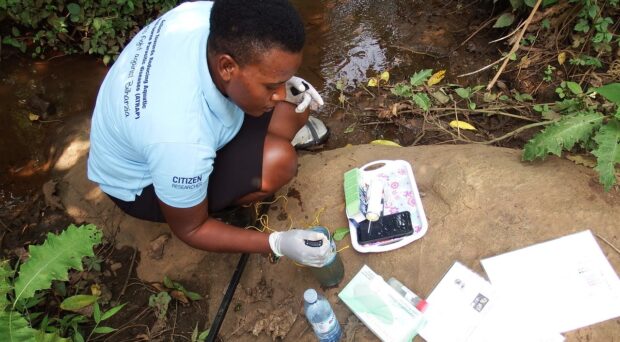
Nobody chooses where to be born, but have you ever wondered how this fact affects your health?
In 2021, Ashepet and colleagues revealed a map displaying co-existing vector-borne diseases worldwide. In Europe and North America, the number of such diseases oscillates between 0 and 1. However, in the Global South that number skyrockets to 7! These differences are not coincidental, they are intertwined with poverty and lack of access to basic services.
Consider this: in Africa alone, over 400 million people lack access to safe water. Every time they fetch water, they expose themselves to vector-borne parasitic diseases. One such disease is schistosomiasis, affecting over 250 million people globally and ranking second only to malaria in terms of prevalence. If left untreated, it can lead to severe morbidity and even death.
The World Health Organization (WHO) recommends a range of measures to combat schistosomiasis including mass drug administration and behavioural change. However, there is a key element in the disease’s life cycle: snails. Recognising the importance of snail control and community involvement, WHO incorporated these measures into the roadmap for schistosomiasis elimination by 2030. Various studies have demonstrated that interventions integrating snail control are more effective.
But locating and properly identifying snails in areas with limited budgets and scarce malacological expertise, such as in remote regions in Sub-Saharan Africa, can be incredibly challenging. This is the reason behind the ATRAP project (Action Towards Reducing Aquatic snail-borne Parasitic diseases), a citizen science-based initiative. ATRAP engages community members in scientific activities, specifically snail monitoring, but also in the design of community led intervention campaigns.

One of the primary concerns of citizen science is data quality. ATRAP developed a rigorous sampling and validation protocol to ensure high quality data. This protocol included automatic validation and the calculation of observational bias (Tumusiime et al., submitted). Astonishingly, citizens made less than 1% of errors in snail recognition, and their data correlated with expert-collected data by over 70%. All of this was achieved at a cost 7.6 times cheaper than expert data collection.
Apart from data generation, citizen participation also empowers communities, increases awareness of snail-borne diseases, and enhances their control and prevention. The same citizen scientists were also involved in setting up community-led awareness campaigns. More than 25000 people were reached, inciting local actions and new bylaws. Consequently, this project represents a highly innovative and sustainable addition to classical surveillance programs, or even a replacement in remote areas. The project also holds a huge potential for upscaling to other regions in Africa and beyond.
Just one month ago, the ATRAP project celebrated a significant achievement by winning the NTD (Neglected Tropical Diseases) Innovation Prize. This award will further boost the project, allowing it to expand its knowledge from potential transmission sites (snail occurrence) to actual transmission sites by detecting actual parasite transmission through environmental DNA monitoring. This citizen science approach has already proven its potential by generating unprecedented snail (and soon parasite) datasets in terms of spatiotemporal resolution and coverage. ATRAP also intends to create an open-access platform to maximize data accessibility.

Whether it is spotting snails or raising awareness about schistosomiasis, citizen science has emerged as a powerful tool to fulfil societal needs in under resourced communities. The ATRAP project stands as a shining example of how community members, armed with motivation and guided by innovative protocols, can make an extraordinary impact on public health. As we look to the future, it is clear that citizen science will continue to play a vital role in controlling and preventing snail- and maybe other vector-borne diseases, ultimately contributing to a healthier and more equitable world for all. Together, we’ve snailed it.

Comments